In this blog, Suchandra Dutta, Aditya Sinha, and DebabrataBasu discuss how Artificial Intelligence (AI) technology is shaping our response to addressing several challenges in Indian Agriculture.
CONTEXT
Artificial intelligence (AI) is a multi-approached interdisciplinary science that seeks human intelligence simulation in machines designed to think like humans and imitate their behaviours, such as learning and problemsolving. Research scientists and extension professionals are currently using AI technologies to address problems in agricultural production. AI technologies can help farmers to generate more yields by selecting appropriate crop varieties, adopting better practices in soil and nutrient management, pest and disease management, and help the government in determining crop production estimatesand predicting commodity prices.
AI IN AGRICULTURE
AI uses machine learning, deep learning, image processing, artificial neural network, Wireless Sensor Network (WSN) technology, robotics, Internet of Things (IoT) technologies,and many more advanced tools to render solutions toagricultural problems. For instance,a rice forecasting model, pest attack prediction, and advisories for sowing developed by the International Crops Research Institute for the Semi-Arid Tropics (ICRISAT) in collaboration with Microsoft[1] is a major initiative towards creating increased income and providing stability for the agricultural community.Using the Internet of Things (IoT) technologies, Infosys[2] has built a precision crop management testbed to address the increasing demand for food. The testbed focussed on improving crop yield through the analysis of real-time data obtained from environmental sensors located in the commercial crop fields.Intello Labs,[3] uses image-recognition software to monitor crops and predict farm yields. Aibono[4]uses agridata science and AI to provide solutions to stabilise crop yields. Trithi Robotics[5]uses drone technology to allow farmers to monitor crops in real time and provide precise analysis of their soil.
These AI technologies can now help farmers to monitor several items in realtime, such as weather, temperature, water usage, or soil conditions obtained from their farm to better inform their decisions (Armstrong et al. 2020). Using artificial intelligence we can establish smart farming practices to reduce farmers’ losses and provide them with high yields. The mechanism that drives smart farming is Machine Learning, which is asubset of AI (Figure 1). It is the one of the outstanding tools to analyse, understand, and identify a pattern in agricultural operational environments. Machine learning begins with a seed being planted in the soil – starting with soil preparation, then seeds breeding and water feeding measurements– and it ends when robots pick up the harvest determining the ripeness with the help of computer vision.
An example of a firm engaged in such activity is SatSure, which is a startupwith roots in India, using machine learning techniques to assess images of farms and predict the economic value of their future yield. They respond to emergingrisks with advanced warnings and decisional insights. Field operations are improved through strategic information gained from satellites, sensors, and markets. Furthermore, the health of large areas is monitored remotely and crop yields predicted accurately.SatSure has recently partnered with agricultural insurance companies in India, such as Reliance General Insurance Company Limited (RGICL), for satellite-based monitoring ofcrops and using predictive analytics for improving the efficiency of crop insurance operations.
Similarly, Deep Learning is another AI tool which is a subset of Machine learning (Figure1) that is mainly used to solve the problem of writing a particular programme for every object to be identified. It saves both time and efforts of a programmer who needs to undertake the tasks of feature specification or optimisation (Ahir et al. 2020). Plantix, a mobile crop advisory app for farmers, extension workers and gardeners, has been developed by Progressive Environmental & Agricultural Technologies (PEAT), Germany, in collaboration with its knowledge and extension partner, ICRISAT, and the Acharya N G Ranga Agricultural University. It uses deep learning techniques to diagnose pest damages, plant diseases and nutrient deficiencies affecting crops, and offers corresponding treatment measures.
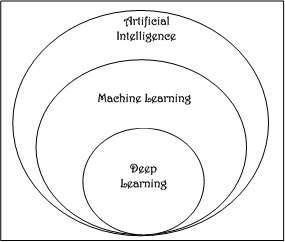 Figure 1: Subset of Artificial Intelligence (Dutta et al. 2020)
Figure 1: Subset of Artificial Intelligence (Dutta et al. 2020)
Use of AI tools (satellite imagery and drones) for prediction
A wealth of new data opportunities has opened up the emergence of artificial intelligence along with its associated technologies. Remote sensors and satellites can gather information continuously over an entire field. These can monitor the health of plants, soil condition, temperature, humidity, etc. Remote sensors allow algorithms to interpret the environment of a field as statistical data that can be understood and then used for decision-making by farmers. The more inputs and statistical information collected, the better the algorithm will be at predicting a range of outcomes. The aim is for farmers touse this artificial intelligence to achieve the goal of a better harvest through better decision-making on the field.
Machine learning algorithms,together with images captured by satellites and drones, could enable AI technologies to help predict weather conditions, analyse crop sustainability and evaluate farms for the presence of diseases or pests and poor plant nutrition on farms – based on data such as temperature, precipitation, wind speed, and solar radiation. The current environmental conditions make it difficult for farmers to predict rainfall, soil conditions, and groundwater levels. Artificial intelligence can play a key role in modernizing agricultural activities.
The aim is to allow farmers to gain a shrewder overview of the scenario on the farm through technological advancement (such as remote sensing) that would tell them more about their situation than they can see with their naked eye. It is not just more accurate but also quicker than visually seeing it by walking or driving through the fields.
| Box 1: AI-based sowing advisories with comprehensible visualizations by ICRISAT In collaboration with the International Crops Research Institute for the Semi-Arid Tropics (ICRISAT), Hyderabad, Microsoft has developed an AI-Sowing App powered by Cortana Intelligence Suite that includes Machine Learning and Power BI (for providing interactive visualizations for easy understanding of the data). The app sends sowing advisories to participating farmers on the optimal date to sow Farmers don’t need to install any sensors in their fields or incur any capital expenditure. All they need is a feature phone capable of receiving text messages. The advisories contain essential information including the optimal sowing date, soil test-based fertilizer application, farmyard manure application, seed treatment, optimum sowing depth, and more. In tandem with the app, a personalised village advisory dashboard provides important insights into soil health, recommended fertilizer, and seven-day weather forecasts. In 2017, the programme was expanded to touch more than 3,000 farmers across the states of Andhra Pradesh and Karnataka during the Kharif crop cycle (rainy season) for a host of crops including groundnut, ragi, maize, rice and cotton, among others. The increase in yield ranged from 10% to 30% across crops. 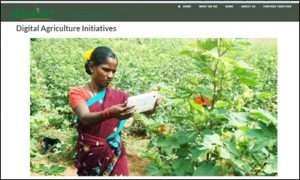 |
Customized farm-based advisories
The nature of the extension system and approach could be redesigned to make location-specific agro meteorological information and sensor-based soil, plant, water and pest conditions useful for farmers’ expert systems. If these technologies are made easily available and user-friendly, it can support millions of farmers across India. These AI techniques can also be the enabler of aparadigm shift from location-based advisory services to personalized and context-specific advisories for the millions of farmers in our country. A large amount of data – from government and public websites or real-time monitoring of various crop & field data – can be analysed with precision. In addition, comprehensive testing and validation of emerging AI applications in this sector will be crucial, because unlike other fields where risk is easier to model and forecast, agriculture is impacted by environmental factors that cannot be tracked.
For a multi-lingual society such as India’s, with farmers having limited knowledge of advanced tools and techniques,AI techniques like auto-translation among various languages, ‘text to speech’ and ‘speech to text’ in Indian languages can help the farmers in accessing the required knowledge generated by the National Agricultural Research and Education System (NARES).
However, the practical challenges that farmers face are: inadequate availability of AI expertise, manpower and skilling opportunities; high resource cost and low awareness for adopting AI in farming processes; ambiguous privacy, security and ethical regulations.
APPLICATION OF AI IN GOVERNMENT INITIATIVES AND AGRI-STARTUPS IN INDIA
Realising the importance of AI, the Government of India has adopted AI technologies in several developmental initiatives. A few examples are given in Table 1.
Table 1: Application of AI in the initiatives of the Government of India
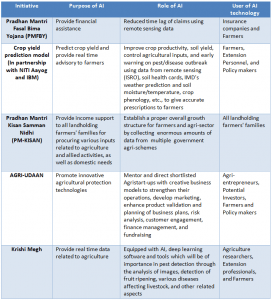
In the 2019 budget, Finance Minister Nirmala Sitharamanem phasised“Gaon, Garibaur Kisan” as the government’s agenda. AgriTech has become a booming field in India, with a range of start-ups working with technologies such as data analytics, machine learning and satellite imagery, among others, enabling farmers to optimise their production. According to a National Association of Software and Service Companies (NASSCOM) report, the Indian Government specifically supports AgriTech start-ups through its start-up India programme. With more than 500 AgriTech start-ups in India, the agritech momentum is gaining pace in India. Some of the recently launched and promising agristart-ups in India utilizing AI in farming are shown in Table 2.
Table 2: Application of AI in Agricultural Start-Ups in India
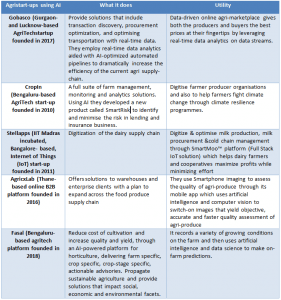
BENEFITS OF AI
The agricultural sector is embracing the use of AI technologies to improve decision making. The use of data in agriculture is increasingly being utilized and processed for decision making. This is made possible through developments made within the sector such as increased use of sensors, improved rate of access to satellite images, reduced costs of data loggers, increased use of drones, and better access to government data repositories. AI in agriculture is emerging in the following categories:
- Soil and Crop Monitoring: The monitoring of crops and soil is a common application of artificial intelligence. Data can be obtained using technologies such as Internet of Things (IoT), drones, and field satellite imagery, and then tracked and analysed by AI-based applications to find the right solutions. AI-enabled applications promote the understanding of soil defects, plant pests and diseases. Data can be analysed very quickly and easily with the aid of machine learning algorithms. Mobile agricultural apps can help farmers evaluate crop data, keep records, monitor weather changes, and generally run their farms more efficiently.
- Predictive analytics: AI technology is useful to predict the weather and other conditions related to agriculture such as quality of the soil, weather and groundwater level, etc. It is speculated that AI-based advisories would be useful to extend production by 30%. The biggest challenge to farming is crop damage due to different kinds of disasters, including pest attacks. Most of the time, due to lack of proper information farmers lose their crops. AI-enabled image recognition is going to be useful in such cases. The data will also be useful in enhancing production.
- Increasing efficiency of farm mechanisation: Image classification tools combined with remote- and local-sensed data can bring a revolutionary change in utilisation and efficiency of farm machinery, especially in areas of weed removal, early disease identification, produce harvesting and grading. Horticultural practices require a lot of monitoring at all levels of plant growth and AI tools provide round-the-clock monitoring of these high value products. The unavailability of farm labour has led to the introduction of self-driving tractors. Mahindra and Mahindra Ltd,[1] India’s largest manufacturer of tractors, showcased its first driver less tractor in September 2019. Mahindra’s tractor can steer automatically using GPS-based technology, lift tools from the ground, recognise the boundaries of a farm, and can be operated remotely using a tablet.
- Increasing the share of price realisation to producers: Current low levels of price realisation to farmers (as low as 20% in fruits and vegetables) are primarily due to ineffective price discovery and dissemination mechanisms, supply chain intermediary inefficiency, and local regulations. Predictive analytics using AI tools can provide more accurate supply and demand information to farmers, thus reducing information asymmetry between farmers and intermediaries. As commodity prices are interlinked globally, big data analysis becomes imperative. Data from e-NAM, Agricultural Census (with data on over 138 million operational holdings), AGMARKET and over 110 million Soil Health Samples provide the volumes required for any predictive modelling.
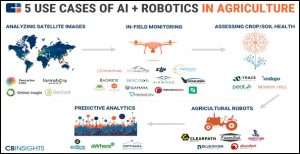 Figure 2: Various uses of AI in agriculture (cbinsights.com)
Figure 2: Various uses of AI in agriculture (cbinsights.com)
CHALLENGES IN IMPLEMENTING AI IN INDIAN AGRICULTURE
Although AI is seen as a prospective technology to provide us with life-changing agricultural solutions, it is well known that AI relies solely on the quality of available data. This is a big challenge in the Indian context, especially with regard to getting the data required at farmers’ level. Data collection is a problem, but as privacy issues are common individuals are often not happy to share their data. Therefore, a technical approach to data collection is necessary. We need to devise ways to collect data without infringing on farmers’ privacy, in an automated manner.
While applying AI technology it must be noted that most farmers in India have very small landholdings as well as allow resource base. Thus, the extension personnel must encourage the farmer to look at agriculture as a business and use AI technology to increase their profit sustainably. There is also a need to generate farmers’ interest in using the AI model already available in the market. Suitable demonstration and training must be given on using specific AI-based technology to farmers.AI technology is needed to solve real issues on the ground. For broader adoption, AI needs to be applicable, affordable, accessible, achievable and sustainable.
FUTURE PROSPECTS AND CONCLUDING THOUGHTS
AI has immense potential in the current decade within the context of developing countries, such as India. The solutions offered by AI could help in the precise monitoring of crops and deal with the issue of labour shortages that is found in agriculture to a large extent.
With improvement in the IT infrastructure of the country, we are very well-poised to harness the potential of AI technologies in agriculture, and thus contribute to enhanced agricultural growth. To exploit the full potential of AI, there is a need to orient the students studying agriculture on applying AI technology in agriculture. Artificial Intelligence in agriculture should be added in the UG curriculum to increase their interest and awareness of the rapid advancements in this area. We also need more collaboration among agricultural scientists, machine learning engineers, and data specialists to develop relevant AI applications in agriculture.
REFERENCES
AgricxLab. Retrieved September 9, 2020, from www.agricx.com
Ahir K, Govani K, Gajera R and Shah M. 2020. Application on virtual reality for enhanced education learning, military training and sports. Augmented Human Research 5(1):7.
Armstrong LJ, Gandhi N, Taechatanasat P andDiepeveen DA. 2020. Advances in artificial intelligence (AI) for more effective decision making in agriculture. Pages 95-120 in Improving data management and decision support systems in agriculture(Armstrong L. ed.).BurleighDodds Science Publishing Limited.
Cbin sights. Retrieved September 9, 2020, fromhttps://www.cbinsights.com/research/ai-robotics-agriculture-tech-startups-future/
CropIn. Retrieved September 9, 2020, from www.cropin.com
Dutta S, Rakshit S and Chatterjee D. 2020. Use of Artificial Intelligence in Indian agriculture. Food and Scientific Reports1(4):65-72.
Dutta S, Sinha A and Basu D. 2020. Role of Artificial Intelligence in Agriculture: Current Scenario and Future Prospects. New Delhi: New Delhi Publishers. (Forthcoming.)
Fasal. Retrieved September 9, 2020, from www.fasal.co
Gobasco. Retrieved September 9, 2020, from https://www.tofler.in/gobasco-private-limited/company/U01100UP2017PTC089043
Government in adapting AI enabled approach to Indian agriculture. Retrieved September 9, 2020, from https://newsjizz.in/64149-ai-big-data-to-change-the-rules-of-the-game-in-theagricultural-sector-of-india-agri-sec.html
Pradhan Mantri FasalBima Yojana (PMFBY). Retrieved September 9, 2020, from https://www.aninews.in/news/national/general-news/pradhan-mantri-fasal-bima-yojana-pilot-studies-to-rationalise-cces201809041850220001/
Recent Initiatives by ICRISAT. Retrieved September 9, 2020, from
www.fao.org/e-agriculture/news/harnessing-power-ai-transform-agriculture
Reliance General Insurance, Satsure Analytics in tie up. Retrieved December 31, 2020, fromhttps://www.thehindu.com/business/reliance-general-insurance-satsure-analytics/article32776524.ece
Stell apps. Retrieved September 9, 2020, from www.stellapps.com
Footnotes
[1]https://news.microsoft.com/en-in/features/ai-agriculture-icrisat-upl-india/
[2]https://www.infosys.com/services/engineering-services/features-opinions/precision-crop-testbed.html
[3]https://www.intellolabs.com/
[4]http://www.aibono.com/about-us/
[5]https://www.3thi.com/about-us/
[6]https://www.satsure.co/agriculture.html
[7]https://plantix.net/en/
[8]https://www.icrisat.org/mobile-app-to-help-farmers-overcome-crop-damage-launched-in-india
[9]https://tractorsinfo.com/mahindra-driverless-tractor/
 Suchandra Dutta, PhD Research Scholar, Department of Agricultural Extension, Bidhan Chandra Krishi Viswavidyalaya, Mohanpur, Nadia, West Bengal – 741252
Suchandra Dutta, PhD Research Scholar, Department of Agricultural Extension, Bidhan Chandra Krishi Viswavidyalaya, Mohanpur, Nadia, West Bengal – 741252
(email id: suchanddradutta@yahoo.in)
 Aditya Sinha, Assistant Professor-cum-Junior Scientist, Department of Extension Education, Bihar Agricultural University, Sabour, Bhagalpur, Bihar -– 813210, (email id: inc.aditya@gmail.com)
Aditya Sinha, Assistant Professor-cum-Junior Scientist, Department of Extension Education, Bihar Agricultural University, Sabour, Bhagalpur, Bihar -– 813210, (email id: inc.aditya@gmail.com)
 Debabrata Basu, Professor, Department of Agricultural Extension, Bidhan Chandra Krishi Viswavidyalaya, Mohanpur, Nadia, West Bengal– 741252(email id: drdbasu@gmail.com)
Debabrata Basu, Professor, Department of Agricultural Extension, Bidhan Chandra Krishi Viswavidyalaya, Mohanpur, Nadia, West Bengal– 741252(email id: drdbasu@gmail.com)

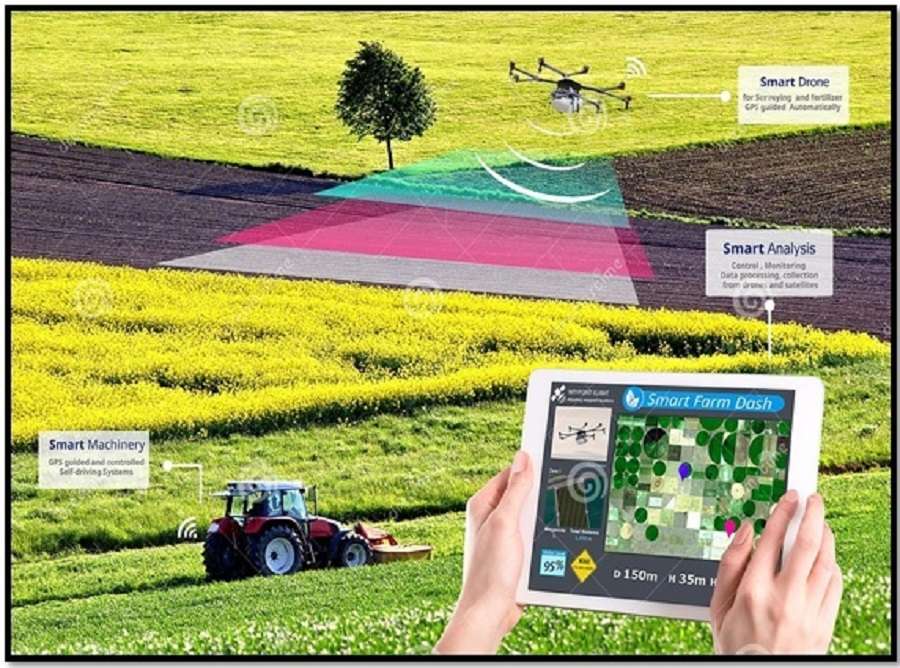

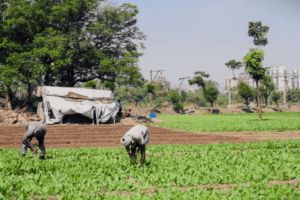

Data science, IoT , Machine Learning etc. are emerging fields of science. Though initially conceived for applications in the field of computer science, these fields are now becoming essential in the agricultural sector. Knowledge in these fields of science would be the key driving force in agricultural research, as articulated by the authors. Already many Agricultural universities like TNAU and UAS Raichur started training their faculty and students in IoT. If others also follow the same suit, it would be a giant leap to advance agricultural research. Thanking #AESA for this timely blog.
Thanks for sharing the informative blog on AI by Dutta, Sinha and Basu. The blog is a good read and useful for extension professionals. However, I find three missing information, which I wanted the authors of the blog to see.
1. Discussion paper on National Strategy on Artificial Intelligence by Niti Aayog, 2018. The paper flags important issues like ethics, bias and privacy relating to AI.
2. Niti Aayog, 2020 AIRAWAT – Establishing an AI specific cloud computing infrastructure for India- An approach paper. The use cases of AIRAWAT are covered.
3. Partnership project of NITI Aayog and IBM in agriculture implemented in 10 aspirational districts across 7 states in India.
I think the above references will add value to the blog and hence the suggestion.
Congrats to the authors for a nice blog.